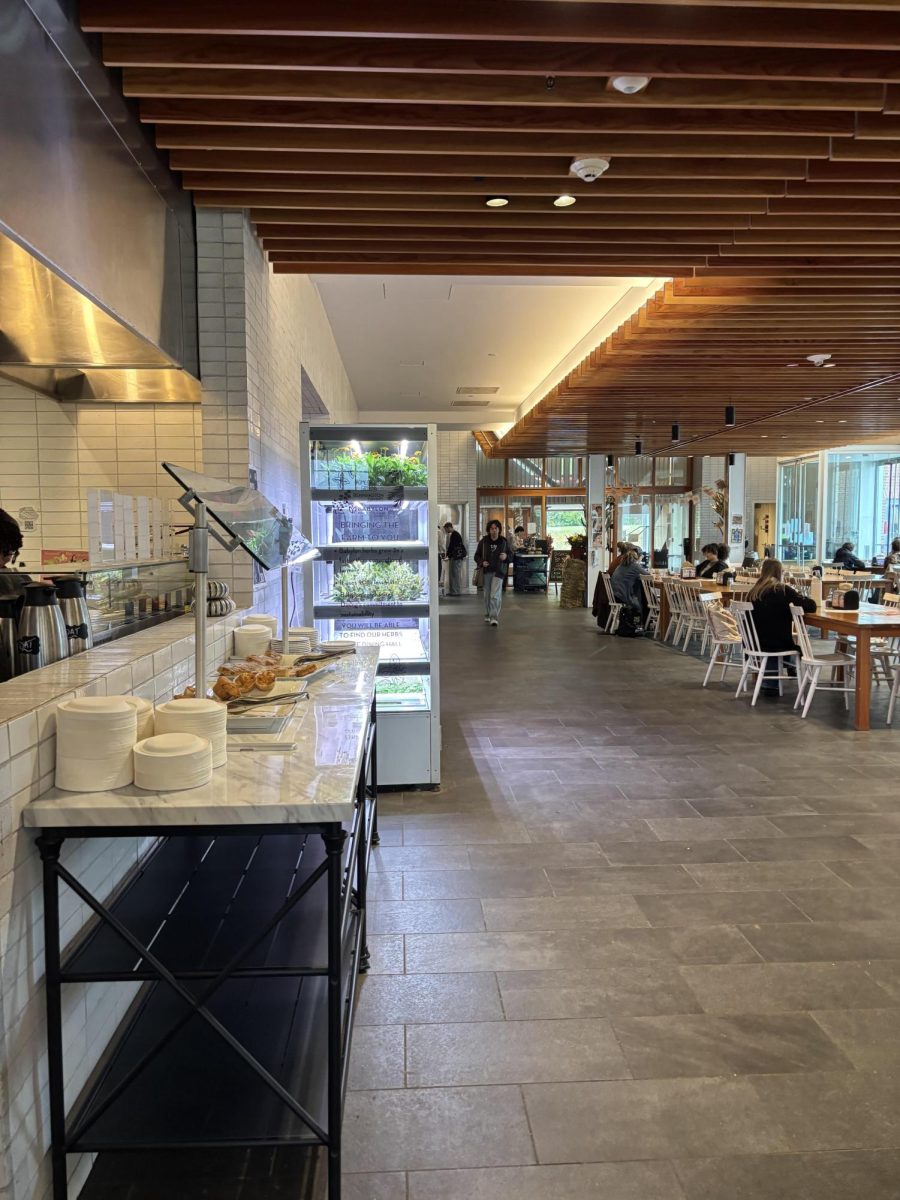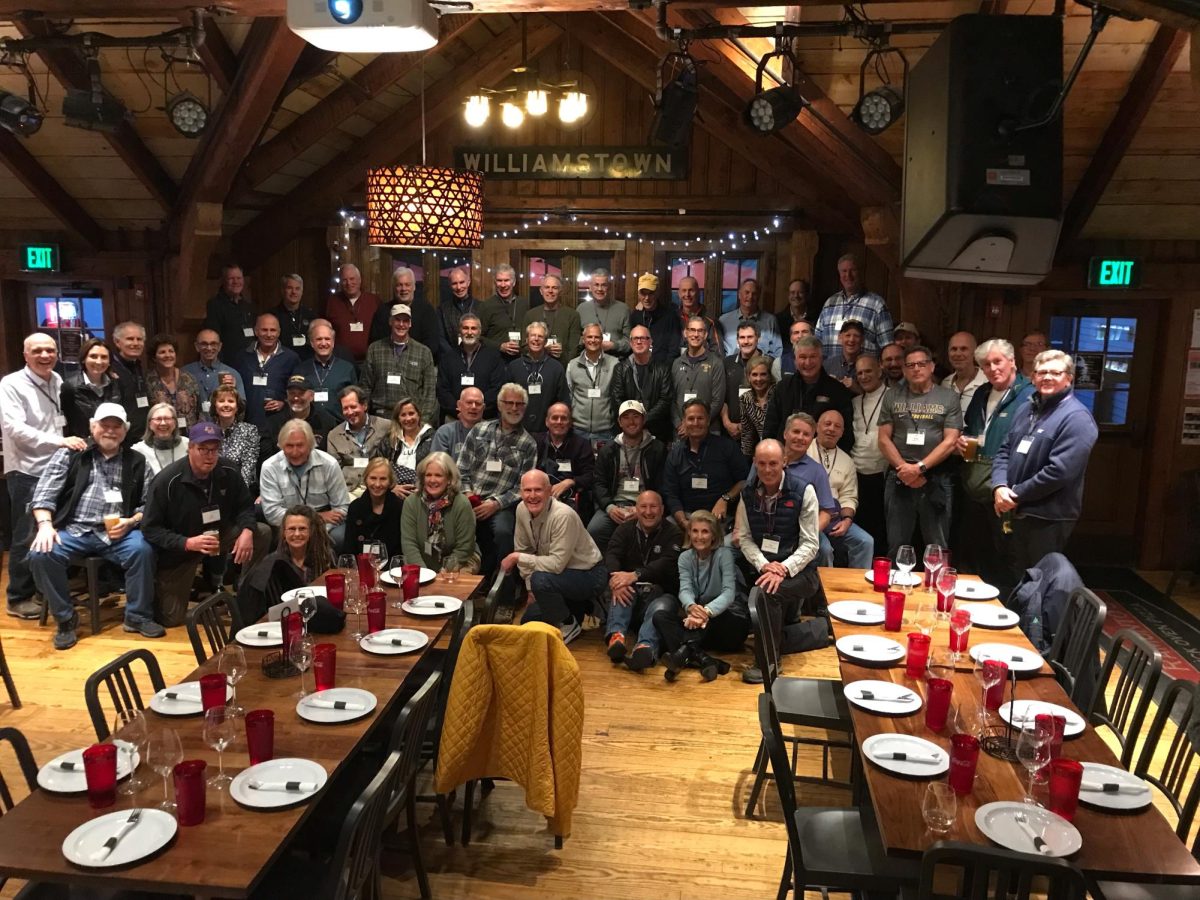
Behind Sawyer Library, and in the shadow of the Berkshire hills, sits a small, gray building that may go unnoticed by students at the College. This building houses the Williamstown Food Pantry, where volunteers package and distribute groceries and other essentials twice a month to benefit local families in need from Hancock, New Ashford, Williamstown, and Pownal, Vt.
In an interview with the Record, Carol DeMayo, who founded the food pantry in 1995, said she started the project after noticing a local need for food assistance. A Town resident with a passion for her community, DeMayo first ran the pantry out of her car, delivering essentials to those in need and storing them at her house.
Later, she moved the pantry’s operations into “a tiny janitor’s closet,” inside the St. Patrick & St. Raphael Parish church on Southworth St., DeMayo said. “I had three shelves, and that was all,” she said. “I only had a few things like peanut butter, soup — just really basic things.” Eventually, the priest of the church built a small addition to the building that serves as the pantry’s home base today.
The space is small, barely big enough to fit a few refrigerators and shelves. But DeMayo and a small group of dedicated volunteers, including Town residents and students from the College, serve 50 to 60 families twice a month, DeMayo said. Volunteers package and distribute boxes filled with non-perishable food items, meat and dairy products, and fresh produce, every first and third Wednesday of the month. The pantry also plans special events for holidays, such as Thanksgiving and Christmas dinners.
The food pantry doesn’t receive any funding from the federal government, DeMayo said. All the products the pantry distributes are received through donations and grants from local organizations and private citizens. “Berkshire Bounty — [an] amazing group — have gone out to find vegetables, produce, milk, eggs … [and] they give it to us,” DeMayo explained.
“One guy is a local, and he’s [from] Bigfoot Farm. He rents a space, and he washes every leaf and bags it beautifully before he brings it to us,” she added. “[Another] lady [came] with carrots from her garden, and she said, ‘I am so proud. I am so proud to give this to you.’”
The Williamstown Food Pantry plays an especially vital role in Berkshire County, where 13.9 percent of households receive benefits through the Supplemental Nutrition Assistance Program (SNAP). Formerly known as food stamps, SNAP provides a monthly fund for food, among other benefits.
However, since the Republican-led tax and spending bill was signed into law in July, the U.S. Department of Agriculture has been making deep cuts to SNAP. It is expected that “approximately 4 million people in a typical month will lose some or all of their SNAP food benefits once the changes are fully implemented,” a report from the Center on Budget and Policy Priorities reads.
The Record went to the Williamstown Food Pantry last week to investigate this changing landscape. Local residents waiting in line for the pantry described a drop in their SNAP benefit totals, higher grocery prices, and uncertainty about what comes next for the program and their families. Interviewees were granted anonymity to protect their privacy and safety.
Two users of the pantry — older men who drive in from Vermont — told the Record that they noticed a decrease in their SNAP funding.
One of them said that they noticed a decrease from $30 to $23 a month but didn’t specify when he had seen the change. He said that the value subsequently increased to $36 a month. The other said he noticed a decrease in the funding a few months ago, when Trump took office, but then noticed an increase again the past week. “Some funding is better than nothing,” one of them added.
Families who go to the pantry and live in the state had a different story to tell. One mother of four told the Record that her benefits recently decreased by $108 without any warning or prior notification. She said that she realized this only when she checked her balance and discovered that it had decreased significantly.
Another attendee, Colleen Johnson, said that her food stamps were cut off two to three months ago, and her health insurance was cut off a month and a half ago. She has been living off of food pantries since February.
Her daughter, who has two young children, also lost her SNAP benefits without any warning. “There’s a snatching going on,” Johnson said in an interview with the Record. According to Johnson and other locals, notifications about losing SNAP benefits often don’t come in until the benefits have already been cut. “It’s already done by the time you get the notification,” she said.
Johnson expressed concern about who is receiving SNAP benefits and how allocation is decided. “It’s supposed to help lower-income and no-income [people] — you know, people in need,” she told the Record. “Which sounds good, but unfortunately, we have a predicament where the income guidelines are arbitrary.”
“I’m not quite sure what criteria they’re using and, therefore, what they call ‘low income’ leaves cracks that people fall through,” she continued. “That can lead them to be flat-out refused or denied.”
Other families said that while they haven’t seen a decrease in their SNAP benefits, they have noticed rising prices at grocery stores in the area. One food pantry user told the Record that the coffee she usually buys has doubled in price while her SNAP benefits, which don’t take inflation and rising prices into account, have stayed the same.
Community members expressed the importance of the Williamstown Food Pantry and other local food pantries. “Volunteers are usually abundant, they are absolutely wage-free, nobody gets anything, and they do it out of the kindness of their hearts,” DeMayo said.








